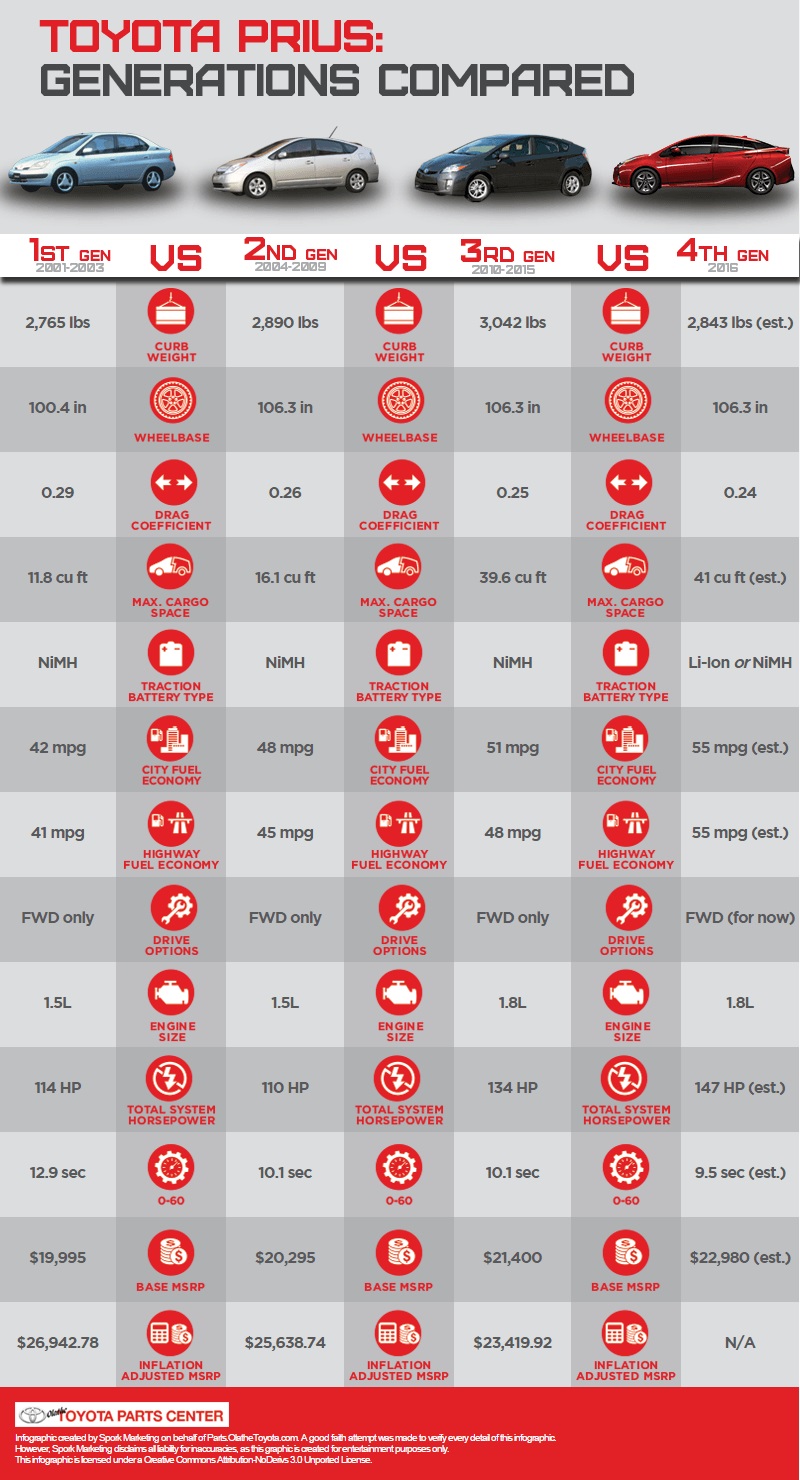See How The Toyota Prius Has Evolved From One Generation to The Next
Olathe, KS., October, 14, 2015 – Using information from a recent Toyota announcement, Olathe Toyota Parts Center has created a comparison chart showing how the new 4th generation 2016 Prius stacks up against previous models. As the chart will show, the Prius has steadily improved in terms of aerodynamics, technology, performance, utility, and fuel economy.
“Seeing how the Prius has evolved over the last 15 years really puts Toyota’s product development process into perspective. Every generation, Toyota manages to make an already efficient car a little more efficient; an already safe car a little safer; an already useful car a little more useful, etc,” says Tom Blackman of Olathe Toyota Parts Center.
According to the comparison chart, the Prius has improved considerably since it was launched in the US in 2001:
- Fuel economy has improved 30% to 55mpg
- Horsepower has increased nearly 30%, while zero-to-60 times have decreased by the same amount
- Cargo capacity has increased 350% since 2001, largely due to the implementation of folding rear seats in 2010, but also due to a decrease in battery pack size in 2016
- Vehicle driving dynamics and safety have improved markedly as well
“While we have no special insider knowledge of what the 2016 Prius features will be, we feel confident in our projection in terms of fuel economy, horsepower, and curb weight reduction,” explains Blackman.
Another big change in the Prius over the years has been in the vehicle’s curb weight. According to the comparison chart, the svelte 1st generation Prius gained nearly 300lbs in weight by 2010. However, the 2016 model is projected to lose 200lbs of this weight thru a combination of:
- A smaller and lighter electric motor and transaxle
- A smaller, more energy-dense battery pack
- Extensive use of high tensile strength steel
- Selective use of composites
Finally, the 2016 Prius Eco model – which will be available with a Li-Ion battery – should be even lighter than the standard model.

As you can see, the newest generation has the most changes to date. The weight hovers around the same figures, wheelbase hasn’t changed dramatically, and the MSRP has been pretty consistent, but it’s not the same car it was over a decade ago.
Battery capacity has remained impressive, but the 2016 model has a major change coming with the use of Li-Ion, instead of the NiMH battery used in all other models.
Horsepower from the first generation to the 2016 has seen an increase of more than 30 total system horsepower. Finally, the 2016 Prius has gained more than 10 miles per gallon of fuel over the first generation — coming in at 55/55 city/highway.
The Prius seems to be getting better and better by the year. It’s become less of a mystery, and more of a mainstream car. With the new changes, it promises to be a fierce competitor for not only hybrids, but for all mid-sized cars on the market.

You must be logged in to post a comment.